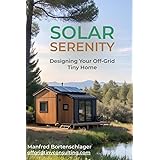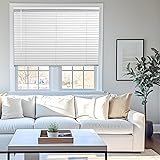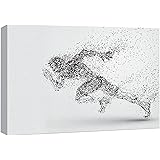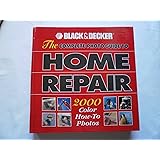The quest for a beautifully designed home is a universal aspiration, yet many homeowners inadvertently make choices that undermine their aesthetic goals. As explored in the insightful video above, certain common interior design mistakes can inadvertently make a home appear less refined or even “cheap.” This comprehensive guide expands on those critical observations, offering expert strategies to elevate your living space and cultivate an atmosphere of sophistication and intentional design.
Understanding these pitfalls is the first step toward transforming your environment. We delve into specific areas where budget-conscious or trend-driven decisions often lead to undesirable outcomes. Our aim is to equip you with the knowledge and actionable advice needed to make discerning choices, ensuring every element contributes positively to your home’s overall perceived value and character. Let’s explore how to sidestep these common errors and imbue your interiors with lasting quality.
Addressing Flat-Pack Furniture Overload
Flat-pack furniture, while undeniably accessible and functional, can sometimes detract from a home’s sophisticated appeal. The ubiquitous particle board and MDF construction, often finished with a thin veneer, inherently possess a distinct aesthetic. When an entire room is furnished exclusively with these pieces, a uniform, almost sterile quality can emerge, diminishing the sense of warmth and individuality. This monochromatic material palette, even when arranged impeccably by professional stylists, often feels lacking in tactile richness and varied texture.
Achieving a truly elegant space requires a thoughtful blend of materials and origins. Integrating unique, often vintage, solid wood pieces alongside select flat-pack items introduces contrast and visual interest. These higher-quality additions, perhaps collected from travels or found in local artisan shops, imbue a room with depth and personal history. The resulting eclectic composition avoids the homogenous “showroom” effect, creating an environment that feels curated and genuinely reflective of the homeowner’s personality. Remember, flat-pack items serve best as supporting actors, not the entire cast, in your home’s design narrative.
Balancing Affordability with Authenticity
The challenge lies in balancing economic considerations with the desire for elevated aesthetics. Smart design integrates high-value pieces strategically, leveraging the cost-effectiveness of flat-pack items for less prominent functions. Consider investing in a heirloom-quality dining table or a substantial dresser made of solid wood. These anchor pieces then provide a foundation around which more budget-friendly, yet stylish, modular components can be arranged.
Exploring the second-hand market or supporting local craftspeople provides excellent opportunities for acquiring unique, well-made items. Such pieces often boast superior construction and materials that age gracefully, developing a beautiful patina over time. This approach not only elevates your home’s appearance but also contributes to more sustainable consumption practices. By consciously mixing different types of furniture, homeowners can craft a space that is both visually rich and financially prudent, moving beyond transient trends towards enduring style.
The Pitfalls of Pervasive Artificial Greenery
While the allure of maintenance-free plants is strong, an overabundance of artificial greenery can quickly cheapen an interior. Many commercially available fake plants, despite marketing claims, often lack the subtle imperfections and organic variation of their living counterparts. Close inspection frequently reveals plastic textures, unnatural sheen, or poorly replicated color gradients, betraying their manufactured origin. These details, though individually minor, collectively contribute to a sense of artificiality that permeates the space, particularly when they are numerous.
Discerning eyes can easily differentiate between truly lifelike artificial plants and their less convincing iterations. The intention behind incorporating greenery is to introduce vitality and a connection to nature; poorly executed fakes undermine this purpose entirely. Instead of adding a refreshing element, they often create a static, lifeless atmosphere. Thoughtful selection and strategic placement are paramount when considering artificial plants, ensuring they enhance rather than detract from your design scheme.
Strategic Placement of Faux Plants
For those challenged by plant care or rooms with inadequate natural light, a judicious use of high-quality artificial plants can be an acceptable solution. The key lies in moderation and meticulous sourcing. Opt for a single, exceptionally realistic fake plant placed in an area where live plants would genuinely struggle. Evaluate its texture, color, and stem details meticulously, preferably in person, to ensure it withstands scrutiny.
However, the ideal scenario remains the integration of living plants whenever feasible. Real foliage offers incomparable freshness, purifying the air and introducing dynamic growth patterns. Even a single well-maintained live plant can inject more life and authenticity into a space than a multitude of artificial ones. Consider varieties known for their hardiness or low-light tolerance if you are a novice gardener, prioritising genuine botanical elements over purely synthetic displays.
Reconsidering Mass-Produced Canvas Prints
The ubiquity of mass-produced canvas prints, often featuring iconic but overused imagery, has rendered them a common design cliché. Prints depicting Highland cows, the Eiffel Tower, or the infamous Audrey Hepburn “Breakfast at Tiffany’s” pose, have become so pervasive they convey a lack of personal expression. While these pieces are often chosen for their affordability and generous size, they inadvertently signal generic taste rather than cultivated style. Covering large wall expanses with uninspired, widely distributed art offers minimal artistic value and can undermine the unique character of a home.
True art selection is an intimate process, reflecting individual tastes and experiences. Relying on these readily available prints bypasses the opportunity to infuse your walls with meaningful narratives or genuine aesthetic preferences. A blank, well-painted wall often serves as a more sophisticated backdrop than one adorned with an unoriginal, widely recognizable image. The goal should be to create visual intrigue and personal resonance, not merely to fill empty space with readily consumable decor.
Cultivating Personal Art Collections
Instead of defaulting to mass-market reproductions, consider cultivating a more personal and distinctive art collection. This does not necessitate a substantial budget; creativity and thoughtful sourcing are far more valuable. Explore local art fairs, student exhibitions, or online platforms dedicated to independent artists, where unique prints or original pieces can be discovered at accessible price points. Even a carefully curated collection of album covers or postcards, framed elegantly, can offer more personality than a generic canvas print.
Alternatively, consider DIY art projects that reflect your specific aesthetic or skills, adding an irreplaceable personal touch. The process of discovering or creating art for your home becomes an enriching journey, culminating in a space that genuinely feels like yours. Prioritizing authenticity and personal connection in your art choices transforms walls into curated statements, effectively elevating your home’s artistic integrity and overall design narrative.
Beyond the “Pop of Color” Throw Pillow
The trend of adding a single “pop of color” throw pillow to an otherwise neutral sofa, while well-intentioned, often falls short of achieving sophisticated design. This approach frequently results in a jarring, isolated splash of color that lacks integration within the broader room’s palette. A lone teal or bright orange cushion on a beige or gray couch can appear disconnected and arbitrary, failing to contribute meaningfully to a cohesive aesthetic. Such singular accents tend to feel more like an afterthought than a deliberate design decision, signaling a superficial attempt at adding vibrancy.
A truly compelling interior design leverages color with nuance and intentionality. Relying on a solitary, bold cushion oversimplifies the complex interplay of hues, tints, and tones that defines a well-developed color scheme. Instead of generating personality, this method often creates a sense of imbalance and can make the overall design appear rudimentary. The objective should be to weave color throughout the space, establishing connections and layers that enrich the visual experience.
Crafting Cohesive Color Palettes
Developing a sophisticated color palette involves more than just selecting a single vibrant hue; it requires a holistic approach to your entire living space. Begin by identifying an overarching color story that resonates with your personal style and the mood you wish to create. Subsequently, integrate various tints, tones, and shades of your chosen colors throughout the room, extending beyond just throw pillows. This might involve subtle wall colors, art pieces, accessories, and even textiles like curtains or blankets.
For example, if you are drawn to blue, consider incorporating deep navy velvet pillows, a dusty periwinkle ceramic vase, and subtle hints of aqua in an abstract artwork. These varied applications of a single color family create depth and visual harmony, establishing a nuanced and sophisticated environment. This strategic layering of color allows for dynamic visual interest, ensuring that every element contributes to a unified and intentionally designed interior, making your home feel curated and thoughtfully appointed.
The Importance of Appropriately Sized Rugs
Undersized rugs are a surprisingly common design flaw that can severely diminish a room’s aesthetic impact. A “tiny dinky rug” placed haphazardly in the center of a seating area creates a disjointed look, failing to anchor the furniture or define the space effectively. This common misstep often suggests either an oversight in scaling or an attempt to make an ill-fitting rug work, resulting in a distinctly “cheap” appearance. The fundamental principle of rug placement is to create a cohesive zone that grounds your furniture, providing a visual “platter” upon which your design rests.
When a rug is too small, furniture typically floats around its perimeter, creating an awkward visual disconnect. This spatial fragmentation prevents the room from feeling unified and inviting. A rug’s primary function extends beyond mere floor covering; it is a crucial element for establishing boundaries, adding warmth, absorbing sound, and introducing texture. Failing to acknowledge this role by choosing an inadequate size compromises the entire room’s sense of balance and proportion, undermining the intention of a well-designed interior.
Scaling Rugs for Optimal Design
Achieving proper rug scale involves adhering to specific guidelines that enhance spatial coherence. The most widely accepted rule dictates that at least the front two legs of all primary furniture pieces (sofa, armchairs, side chairs) should comfortably rest on the rug. This technique effectively unifies the seating arrangement, visually pulling the elements together into a defined conversation area. This creates a sense of intentionality and completeness that smaller rugs cannot achieve.
For larger, more luxurious spaces, the ideal approach is to have all furniture legs fully placed on an expansive rug. This method creates an exceptionally grand and integrated look, providing a lavish foundation for the entire grouping. While larger rugs often entail a higher investment, their transformative impact on a room’s perceived quality and cohesion is invaluable. Opt for durable materials like wool in a simple, timeless pattern to ensure longevity, guaranteeing your investment enhances your home’s aesthetic for years to come.
Upgrading Interior Doors: Hollow vs. Solid Core
Interior doors are often overlooked elements in home design, yet their construction significantly influences a home’s perceived quality and functional comfort. Hollow core doors, characterized by their lightweight feel and a distinct “ping” when knocked, are essentially manufactured wood shells with empty interiors. While economical and easy to install, their lack of substance conveys a cheaper, less substantial feel throughout a home. This often contributes to a general sense of flimsiness, particularly when compared to more robust alternatives.
The inherent lightness of hollow core doors detracts from the tactile experience of a well-built home. They lack the satisfying weight and solidity associated with quality craftsmanship. Moreover, their poor soundproofing capabilities compromise privacy and acoustic comfort, allowing everyday household noises to easily permeate between rooms. These deficiencies, though often subtle, collectively contribute to a less refined living environment, subtly communicating a lower standard of construction and design within your home.
The Functional and Aesthetic Impact of Doors
Investing in solid core doors offers a marked improvement in both the aesthetics and functionality of your interior spaces. These doors, constructed from a solid piece of wood or composite material, possess a satisfying heft and provide superior sound dampening properties. The feeling of a substantial, well-fitting door immediately elevates the perceived quality of a room, creating a more luxurious and secure atmosphere. This tactile difference significantly enhances the daily experience of moving through your home, contributing to an overall sense of refined living.
Beyond the immediate sensory benefits, solid core doors offer enhanced privacy, making them ideal for bedrooms, bathrooms, and home offices. The reduction in noise transmission creates more tranquil and functional zones within the home. While the initial cost may be higher, the long-term benefits in terms of comfort, durability, and perceived value make solid core doors a worthwhile investment, especially during a renovation. Prioritizing these details demonstrates a commitment to quality that resonates throughout your entire home’s design.
Managing Visible TV Cords and Cable Clutter
In an era of sleek, mounted televisions, visible “floating TV cords” are a glaring oversight that immediately detracts from an otherwise modern aesthetic. Dangling cables beneath a wall-mounted screen create a chaotic and unfinished appearance, undermining any efforts to achieve a clean, minimalist look. This common issue signals a lack of attention to detail and can make a high-tech entertainment setup appear haphazard. The contrast between a sophisticated display and messy wiring inevitably cheapens the entire viewing area.
Beyond televisions, any exposed cables from lamps, speakers, or charging stations contribute to visual clutter and can make a space feel disorganized. The presence of tangled or exposed wires disrupts the visual flow of a room, preventing it from feeling cohesive and thoughtfully arranged. Addressing this ubiquitous problem is crucial for maintaining an elevated and polished interior. Neglecting cable management effectively diminishes the impact of even the most carefully chosen furniture and decor.
Seamless Cable Management Solutions
For wall-mounted televisions, the most effective solution for hiding cords involves routing them directly through the wall. This professional approach creates an invisible pathway for cables, resulting in an exceptionally clean and integrated look. While it may require minor drywall work, the seamless finish is unparalleled, making the television appear as a floating art piece rather than a functional appliance tethered by unsightly wires. Consult a professional if you are unsure about drilling into interior walls.
For renters or those seeking less invasive options, paintable cable management strips offer a practical alternative. These discreet channels adhere to the wall, enclosing cords and allowing them to blend seamlessly with the wall color. Ensure the strips are painted to perfectly match your wall hue, as even a slightly off-white can create an obvious visual discrepancy. For other devices, utilize cord organizers, cable ties, or furniture with built-in cable management features to contain and conceal wires, maintaining a pristine and aesthetically pleasing environment throughout your home.
The Deterioration of Veneer Furniture
Veneer furniture, characterized by a thin layer of real or simulated wood applied over a manufactured core like MDF, often presents durability challenges. While initially attractive and cost-effective, particularly with older or lower-quality pieces, the veneer can begin to peel, bubble, or chip with age and use. Once the veneer starts to deteriorate, revealing the underlying particle board or composite material, the piece rapidly loses its aesthetic appeal and structural integrity. This irreversible damage immediately signals a lack of quality and makes the furniture, and by extension, the entire room, appear cheap and neglected.
Unlike solid wood, which develops a rich patina and can be sanded or refinished, peeling veneer offers no viable repair options. Attempts to re-glue or camouflage the damage are often temporary and rarely restore the original finish. This inherent limitation in longevity underscores a critical distinction between true investment pieces and disposable furniture. The visible degradation of veneer is a stark reminder that some initial cost savings can lead to greater long-term expenses or a perpetually unrefined appearance in your home.
Investing in Durable Furniture Materials
Prioritizing quality construction and materials for key furniture pieces is a cornerstone of sophisticated interior design. Solid wood furniture, crafted from continuous timber, naturally withstands the test of time, enduring daily wear and tear with grace. Dings and scratches on solid wood tend to wear in, becoming part of the piece’s character and history, rather than signifying damage. This inherent resilience allows solid wood items to be refinished or repaired over decades, ensuring their enduring value and aesthetic contribution to your home.
When selecting furniture, consider the material and construction methods carefully. For items intended for long-term use, such as dining tables, dressers, or bookshelves, opting for solid wood or high-quality, durable composites is advisable. Explore vintage and second-hand markets for solid wood treasures that often offer superior craftsmanship at competitive prices. While veneer can be a practical choice for certain applications, understanding its limitations and selecting it judiciously can prevent future aesthetic disappointments and ensure a more enduringly elegant home environment.
Navigating Faux Leather and Its Longevity
Faux leather, often marketed under contemporary labels like “vegan leather,” is a synthetic material designed to mimic the appearance of genuine hide. While some advanced iterations boast impressive realism and durability, many varieties, particularly older or budget-friendly options, exhibit significant wear and tear over time. This includes cracking, peeling, and a general degradation of texture, which can quickly transform an initially stylish piece into an eyesore. Such visible signs of deterioration profoundly cheapen the overall aesthetic of a room, evoking a sense of datedness and poor material quality.
The distinction between high-grade faux leather and lower-quality pleather or vinyl is crucial. Inferior synthetic materials often lack the breathability and supple feel of genuine leather, becoming stiff and uncomfortable with age. Their propensity to break down visually is a stark contrast to real leather, which develops a unique and desirable patina through years of use. Unravelling or cracking faux leather is an unmistakable sign of compromised quality, creating an impression of neglect within the home.
Distinguishing Quality in Upholstery
When selecting upholstered furniture, a critical examination of material quality is paramount, particularly for high-use items like sofas and armchairs. For those who prefer non-animal products, research contemporary advances in “vegan leather” that utilize innovative, sustainable materials designed for enhanced durability and aesthetic retention. Always inquire about the material’s composition, testing, and expected lifespan. Inspect samples in person to assess texture, flexibility, and overall feel, scrutinizing for any potential weaknesses in the finish.
Alternatively, explore high-quality fabric upholstery options such as linen, cotton, or durable performance fabrics. These offer a vast array of textures and colors, providing enduring comfort and style without mimicking leather. For those open to genuine animal products, investing in top-grain or full-grain leather ensures a material that not only ages beautifully but also gains character and softness over decades. This commitment to superior materials in upholstery is a fundamental strategy for preventing your home from looking cheap, ensuring longevity, and maintaining an elevated aesthetic appeal.











